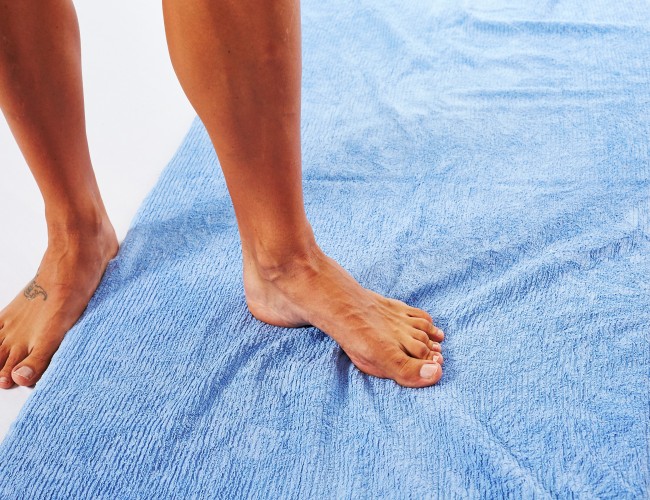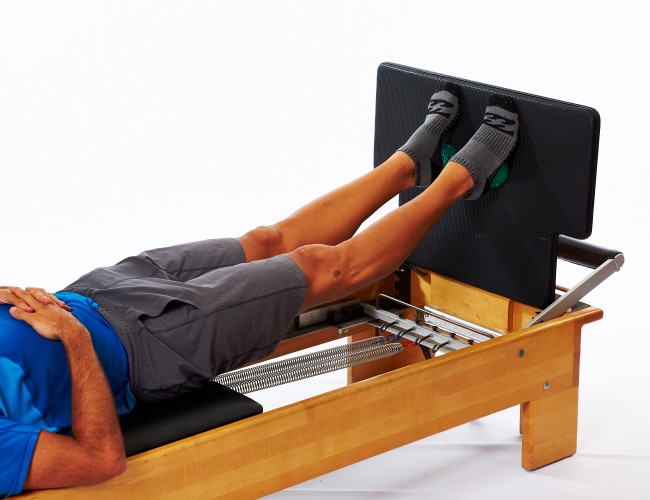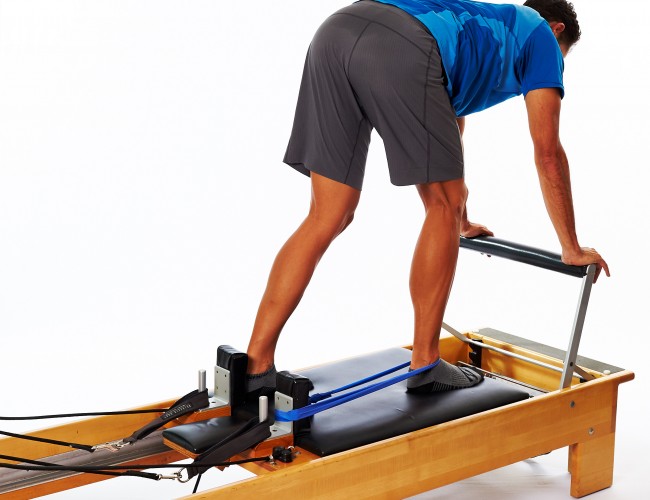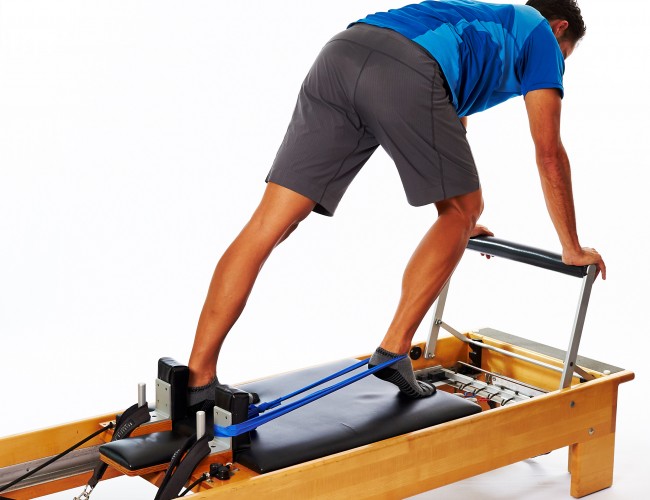Pilates strategies for foot drop
Tue,Jan 01, 2019 at 03:28PM by Carla Mullins
Pilates strategies for preventing and treating foot drop
This article was written in 2016 and has been updated in 2019 to include additional exercises and information. It is a topic covered in our online Anatomy Dimensions foot course, for those interested in learning more.
What is Foot Drop?
Foot drop is a simple way to describe the loss of Range of Movement (ROM) in your ankle. Dorsiflexion is what occurs when your heel is on the ground and the tibia (shin bone) is able to glide over the talus (ankle bone) in order to allow the foot to land in front of you when you stride. Foot drop greatly affects the mobility and balance of sufferers because of when they move their foot off the ground and then place the foot forward on to the ground.
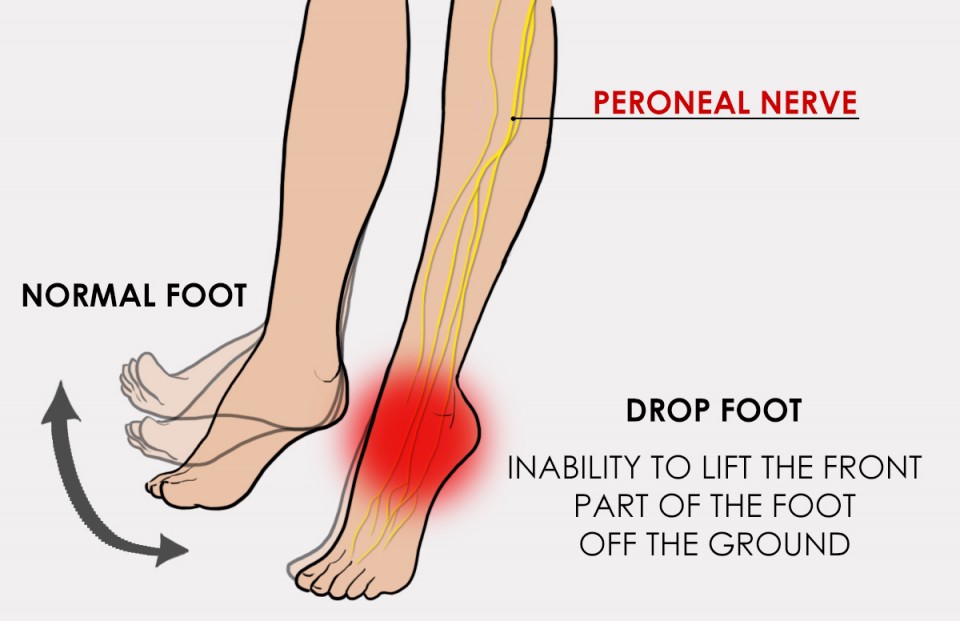
Whilst you are reading this article put your left foot out in front of you and lift your toes off the floor so that your heel is pressing into the ground. That movement is essentially the movement affected by foot drop. This movement may seem insignificant, but if you stand up and do the same thing, you will feel how it allows you to smoothly transfer weight as you walk. Now take a step and instead of your front heel hitting the ground first, feel what happens when your whole foot plonks down onto the ground. Try to walk a few steps with this gait pattern. When you do this you can feel a number of things:
// The stride becomes shorter, almost to a shuffle point
// There is no real bend in the knees as you walk and therefore no activation of hamstrings or hip extensors
// The glute muscles don’t fire, which affects the stability of the lower limbs
// The torso does not really rotate but rather bends from side to side
// Walking feels funky and restricted
Why do people get foot drop?
Foot drop is a common symptom for a range of conditions including multiple sclerosis, Parkinson’s disease, stroke and arthritis. Foot drop can also arise due to some medications, spinal injuries, poor rehabilitation after ankle injury or age. Generally, foot drop is linked to a loss of neural messaging to the peripheries (common in multiple sclerosis and Parkinson’s) and loss of movement in the ankle due to arthritic changes to the joints. It is important to note that foot drop is not something that a person just wakes up with one morning – foot drop develops over years of poor foot patterning and/or compensatory patterns. People with degenerative neurological conditions may not be able to prevent the development of foot drop, but they can perform exercises that will maintain their range of movement and function for as long as possible.
If you would like to learn more about the neurological system I suggest that you start with our online course and book Introduction to Neuroanatomy which will give you the language and background to start your study into more detailed conditions. If you buy the course email us your course receipt and details at education@bodyorganics.com.au and I will send you the colour manual to help you.
Pilates approach to foot drop exercises
Anyone can develop foot drop and everyone should work on good gait patterning
In any class program, whether it be in mat class or studio setting, there needs to be focus on good foot action which includes:
// Toe extension and flexion
// Mid foot mobility
// Ankle dorsiflexion and extension
// Hip flexion and extension
This work should be incorporated into a class and also given to clients as homework (although it is unlikely that every client will do homework, I like to give it out so that clients have the option of completing further exercises at home).
Treating clients who suffer from foot drop
If a client has already started to develop foot drop, you need to work with them to maintain the most effective movement pattern they can by improving range of movement (if possible) or by teaching them effective compensatory patterns that will help with the consequences of foot drop. For example, those with foot drop are prone to falling because of the loss of neurological sensation and proprioception. Accordingly, you need to help them improve their balance by working on the vestibular or the visual systems, which are important tools of balance.
If a person already has poor range of movement and stiffening in the ankle, good physiotherapy or osteopathic intervention may be needed in order to achieve manual mobilization of the foot and to ensure that there are no complications or undiagnosed diseases that may have contributed to the development of the foot drop.
Exercises that are great for foot drop
General foot sensory receptor work
First of all, I like to work with people to improve their sensory input and maintain flexibility of the foot. This helps to keep the proprioceptors in the foot aware and therefore to maintain flexibility. I will generally get the person to do the foot wiggle exercise, which they should also do regularly at home.
Foot intrinsics
The foot intrinsic muscles need to be worked and strengthened in order to maintain flexibility of the foot and to reduce the overuse of the calf muscles. Such exercises include:
// Doming on something like the timber Makarlu bases
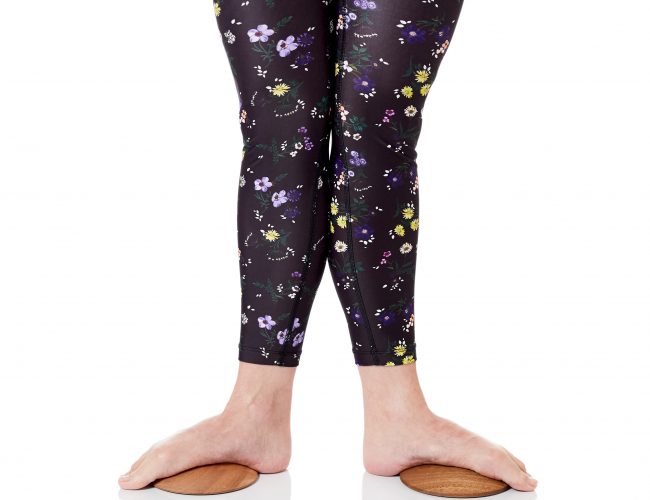
Placing the feet on the timber dome and encourage the sense that the heel and the base of the big toe are drawing together up and off the timber. I like the timber as it gives sensory feedback in a more consistent way than a towel.
// Towel scrunch
// Foot corrector exercises or some ideas with the Makarlu dome
These exercises should be done by clients on a regular basis in the studio and at home. The Makarlu product was designed to help clients perform their homework, by having one beautiful thing that was multipurpose. Our idea was that if you were happy to keep the product on the coffee table you would be reminded to keep doing your homework.
Ankle ROM whilst achieving good foot articulation and hamstring activation and graded calf release
// Reformer footboard, a leg press machine or a Gyrotonic Jump Stretch Board can all be used to help with improving range of motion I would suggest you start with franklin balls under the person’s heels. The person should then move their legs back and forward with the balls under their heels, in order to release the calf muscles so as to facilitate better dorsiflexion afterward. If you are using a leg press machine I would make the weight quite light for this series of work. I would start with this exercise and then get the clients to do the general footboard series with a focus on ankle and foot articulation. We are currently finalizing a special jump board attachment to help with this issue, here is a sneak peek of the Makarlu board, which utilises the Magnets in the Makarlu. This board has other attachments, and will be available in mid 2019
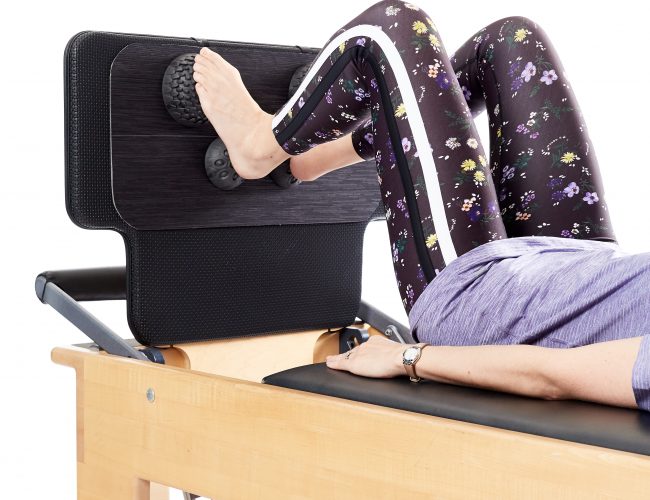
This special board allows the makarlu to attach and remain to allow for assistance in ankle and calf Range of Motion. It is part of the inbuilt features of the Makarlu designed to work in a vertical as well as horizontal position.
// Split elephant on the reformer
I would have the person do this exercise with the band around the ankle at the talus in order to facilitate glide as the person moves and articulate the foot with the carriage movement. This exercise is probably not appropriate for people who have drop foot because of spinal complications. For other clients I would often start them with the Makarlu on the front foot, and slowly reduce the height of the Makarlu dome positioning to encourage better glide and a gradual release of the calf muscles. You can see this concept in the squat series video.
// Graded ankle raises, to help with the release of the calf muscles which when restricted limited dorsi flexion in the ankle.
// Core Align Hoof
Work on glute strength and ankle stability
Makarlu, is an Australian designed and made product that ships all over the world. The product is ideal for rehabilitation and fitness goals. The development of this product was initially inspired to help people with neurological conditions and was specifically developed as we trialed the various prototypes in our studios and clinics over the last few years. It is used in a variety of settings from physiotherapy clinics, pilates, yoga, and dance studios to martial arts dojos.
To order your Makarlu
Body Organics has a number of practitioners who can help with the prevention and treatment of foot drop. For more information, contact Body Organics.
Carla Mullins is co-director and co-owner of Body Organics, a multidisciplinary health and body movement practice with 2 studios in Brisbane. Carla is a Level 4 Professional Practitioner with the APMA and has also studied pilates with APMA, PITC as well as Polestar. She also has a LLB (QUT), M. Soc Sc & Policy (UNSW), Advanced Diploma of Pilates Movement Therapy (APMA), Diploma of Pilates Movement Therapy (APMA) ,Diploma Pilates Professional Practice (PITC), Gyrotonic Level 1,Gyrotonic JSB , Gyrotoner, CoreAlign Level 1, 2 and 3 and Certificate IV in Training and Assessment.
 0
0 
